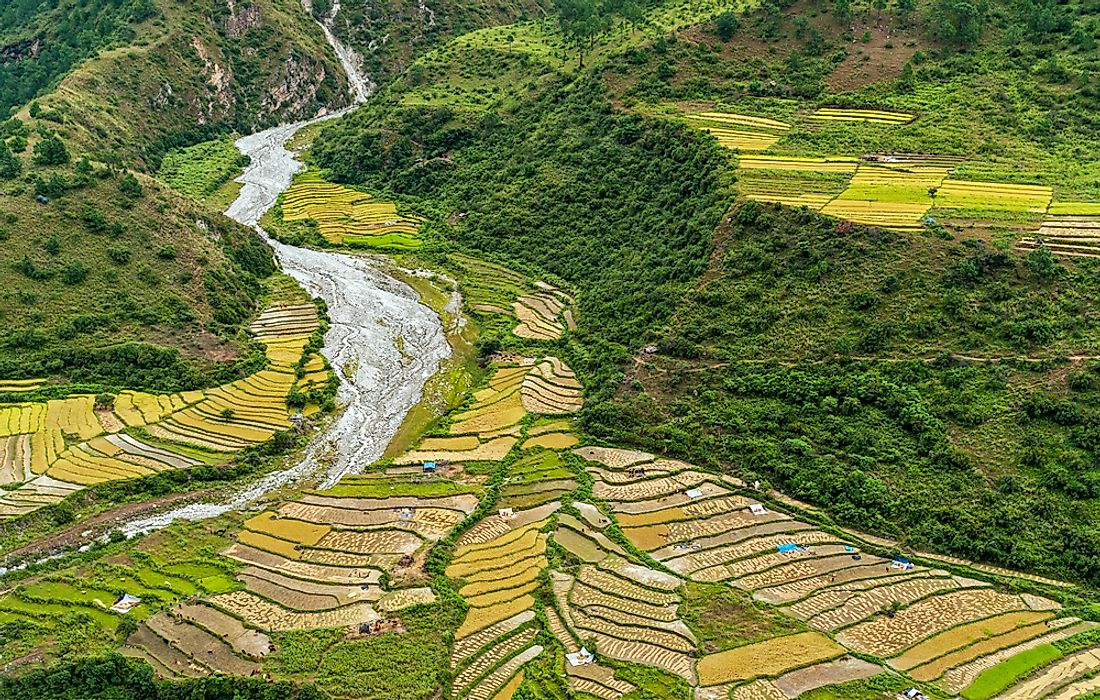What Are The Biggest Industries In Bhutan?

Bhutan is a landlocked country in South Asia situated in the Eastern Himalayas and bordered to the west by India’s state of Sikkim, to the east by Arunachal Pradesh, West Bengal and Assam to the south, and to the north by China’s Tibet Autonomous Region. The country’s capital and largest city is Thimphu, located in the western central part of the country while Phuntsholing is the financial center.
The economy of Bhutan is one of the smallest in the world and is mainly based on agriculture and forestry which are the main source of livelihood for about 60% of the population. The economy is closely linked to that of India since it is dependent on India’s financial assistance. Infrastructural development relies on labor from India. However, a landscape that varies from rugged mountains to hills has made infrastructural development very difficult and expensive. The overall growth of the economy of Bhutan has largely been supported by the hydropower export to India. Lack of access to the sea also means the high cost of trading. Here are some of the biggest industries that have contributed to Bhutan’s economic growth over the years.
Agriculture
Agriculture plays a dominant role in the economy and is also the main source of livelihood for about 60% of the population. In 2000, this sector accounted for 36% of the total GDP of Bhutan. However, the share declined to 33% in 2003. Despite the decline, agriculture still remains the backbone of the economy. About 80% of the population are directly and indirectly involved in agriculture with over 95% of the women workforce working in this sector. Rice and maize are the major crops cultivated in the country. Maize accounts for about 50% of the total cereal cultivation while rice accounts for 43%. Other crops include wheat, potatoes, barley, vegetables, and oilseeds.
Tourism
For the longest time, Bhutan was an isolated country where very few foreigners visited. However, in 1974, the government began promoting the unique Bhutanese culture and tradition to the outside world in an effort to raise revenue, marking the beginning of tourism in the country. In that year, about 280 tourists visited the country and since then the numbers have been increasing dramatically. By the late 1980s and early 1990s, tourism generated over US$2 million annually. In 2014, Bhutan recorded 133,480 arrivals. The largest number of tourists come from India, Bangladesh, and the Maldives.
Mining
The mineral industry in Bhutan is relatively underdeveloped and small in scale compared to the other major industries like tourism and agriculture. The mining and quarrying sector contributed about 3.4% of the GDP in 2015. About 1% of the employed population in the country work in the mining sector. The primary mineral commodity output is the industrial mineral products including iron ore, cement, stones, limestone, marble, gypsum, dolomite, and clay.
Hydropower
Hydroelectricity is Bhutan’s largest export. The country has undertaken several hydropower projects whose outputs are mainly for export to other countries, especially India. Although Bhutan has hydropower potential of 30,000 megawatts, the installed capacity is currently at 1,615 megawatts. Four major hydropower plants and mini-hydroelectric generators are operated in the country.











